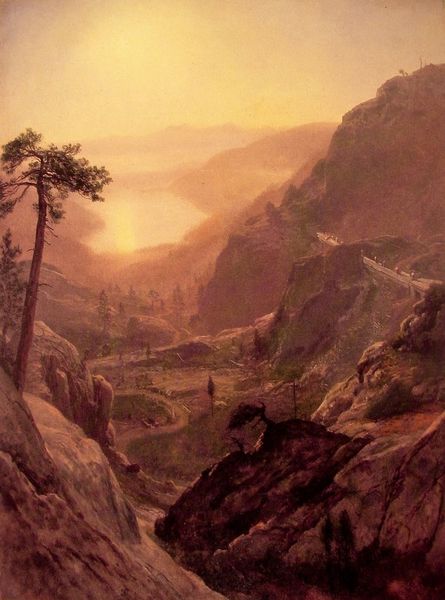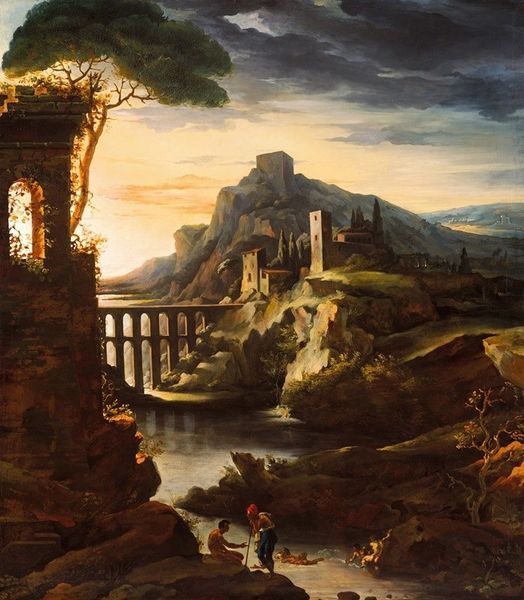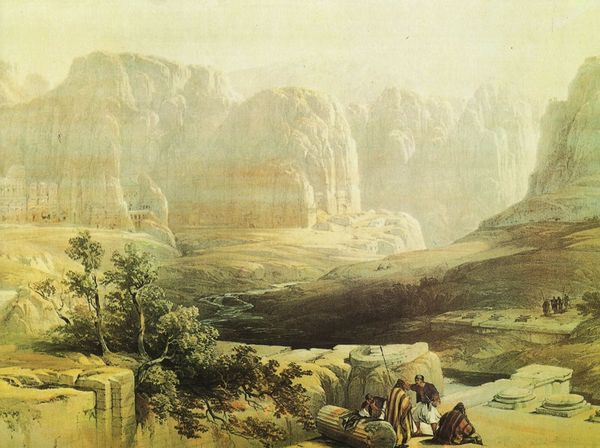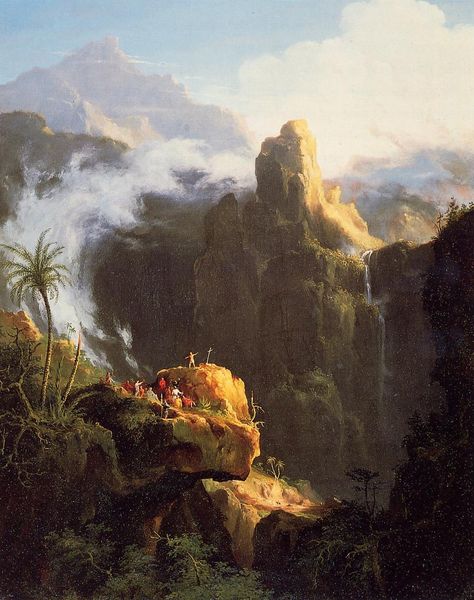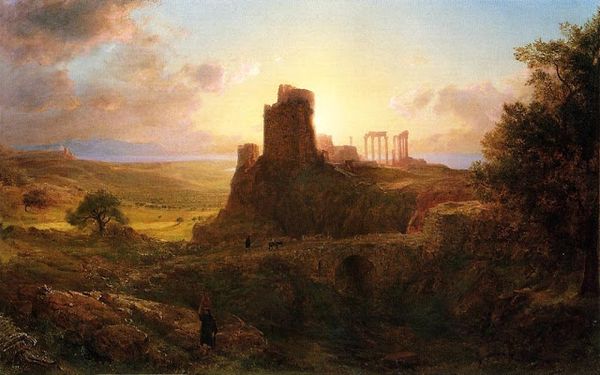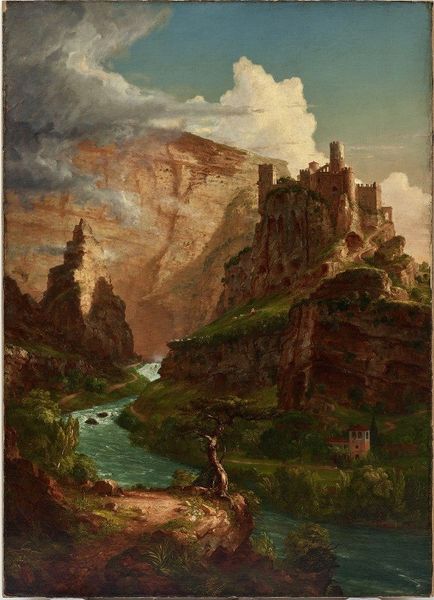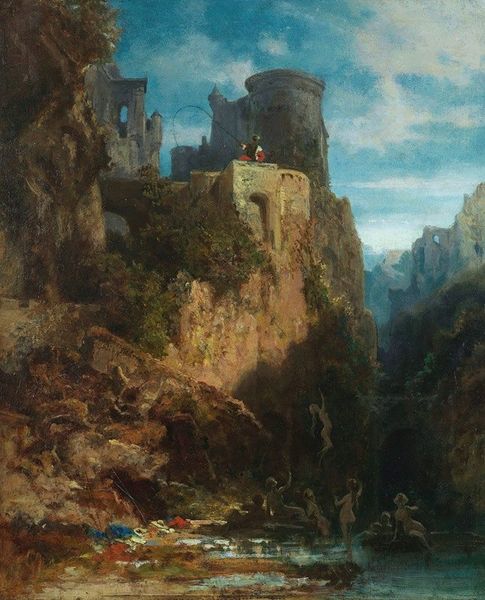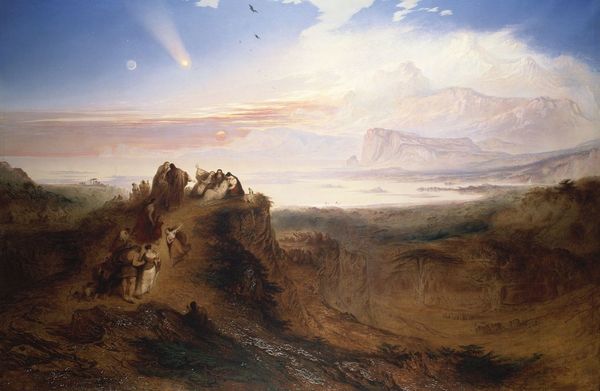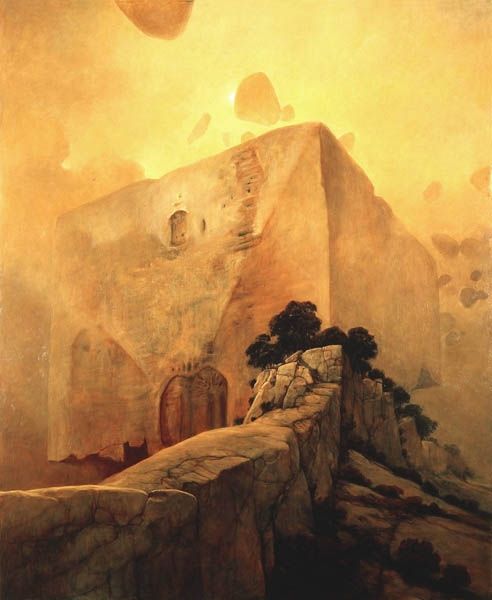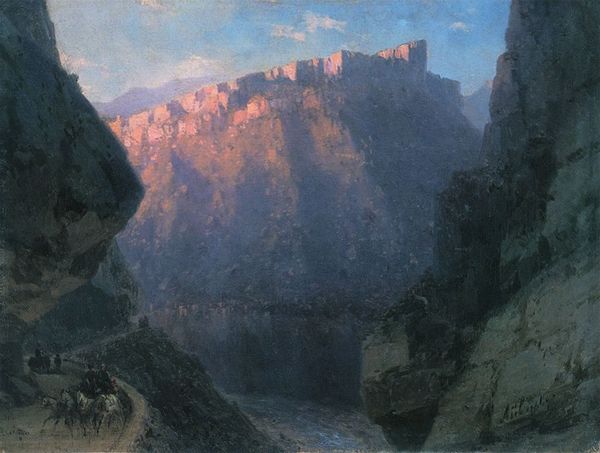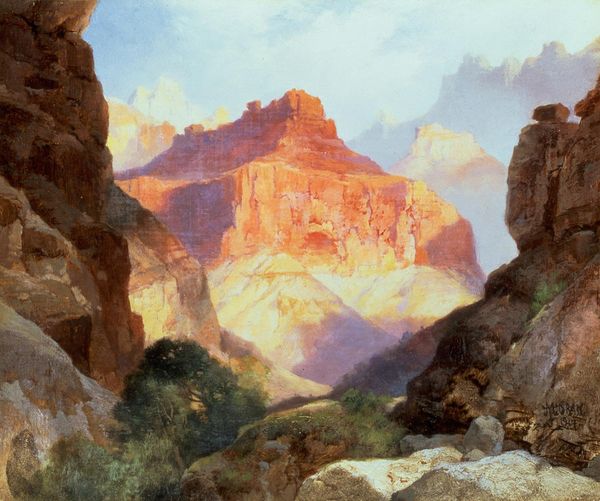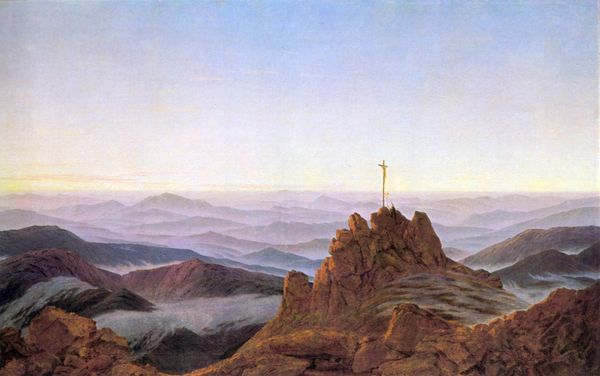
The Chapel of the Virgin at Subiaco 1830
0:00
0:00
samuelmorse
Worcester Art Museum (WAM), Worcester, MA, UK
painting, oil-paint
#
narrative-art
#
painting
#
oil-paint
#
landscape
#
figuration
#
oil painting
#
classicism
#
romanticism
#
history-painting
#
academic-art
Copyright: Public domain
Curator: Samuel Morse, yes, the inventor of the telegraph, created this evocative oil painting, "The Chapel of the Virgin at Subiaco" in 1830, a little known fact for sure! It's now held at the Worcester Art Museum. Editor: Immediately, I'm struck by the almost theatrical light. It really emphasizes the romantic, sublime aspects of the composition—the rugged cliffs, the ruined structure, even the idealized peasants. There's a definite air of staged melancholy. Curator: Indeed. Considering Morse's background, it’s tempting to delve into how this image reflects broader social currents. This work presents a constructed Italian landscape, a romanticized vision likely catering to American audiences yearning for European culture but receiving a heavily filtered view. How do we reconcile this ideal with the reality of production of materials and the potential exploitation inherent in their acquisition? Editor: Fascinating, but I'm drawn more to the interplay of forms here. See how the vertical thrust of that ruined tower mirrors the distant mountain peak? And the artist creates a sophisticated contrast with the soft curves of the figures and the gentle undulation of the hills. It's a clever exercise in visual harmony. Curator: The landscape is indeed quite strategic! Also the material of pigment would not be so readily available to those portrayed in this work! This reflects not just taste but power structures defining both production and reception of artworks at that time. Even the very canvas itself has a history of cultivation, manufacture, and trade… Editor: Yes, but I still find myself responding primarily to the aesthetic impact! It's hard to ignore the sheer beauty of the brushwork and tonal balance. Morse orchestrates this scene beautifully – like arranging notes in a symphony of light. Curator: Perhaps art is always a product, influenced by networks both economic and intellectual, leaving its marks, however faint or deeply submerged? I will give Morse credit that he took such an innovative departure in order to pursue technology, despite what seems to be artistic promise. Editor: Agreed! Analyzing both its aesthetic elements and its relation to manufacturing process adds valuable layers of understanding of artworks! Thank you!
Comments
No comments
Be the first to comment and join the conversation on the ultimate creative platform.
